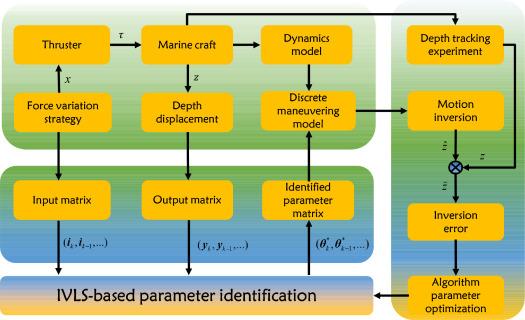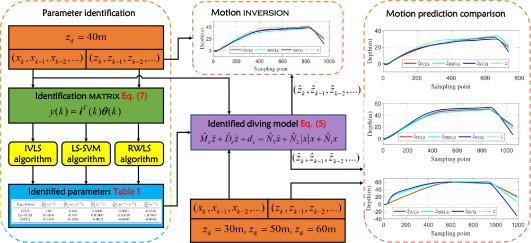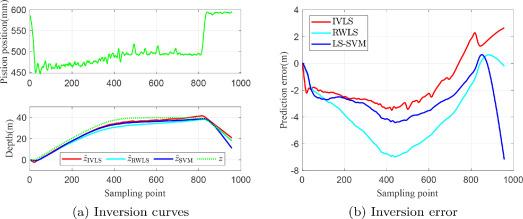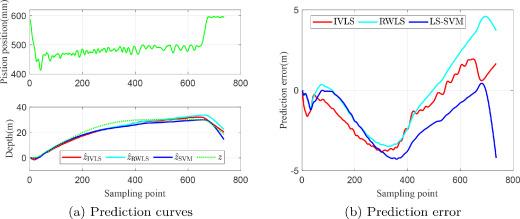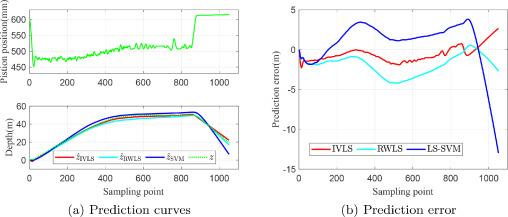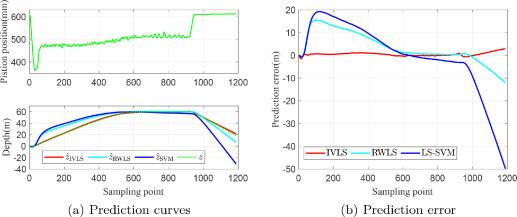Nonlinear models are proved to be superior when dealing with non-linear problems, displaying remarkable adaptability and precision
[24]. They have a heightened ability to grasp the complexities and variations encountered during navigation, adjusting to changes in cruising speeds and rudder angles effectively
[25],
[26]. This flexibility allows for a more realistic representation of dynamic behaviors experienced in marine environments. Recently, several parameter identification algorithms have been proposed and tested based on the nonlinear model. For instance, in
[27], the Abkowitz model was chosen to highlight hydrodynamic characteristics, and a support vector machine algorithm was employed for parameter identification. Compared to the traditional support vector machine algorithm, the least squares support vector machine (LS-SVM) algorithm has simpler and fewer constraints
[28]. Building on the LS-SVM algorithm, Hu et al.
[29] accomplished parameter identification using the Abkowitz model. Numerical simulations demonstrated that the LS-SVM algorithm effectively obtained hydrodynamic coefficients. However, the nonlinear model encompasses a richer set of hydrodynamic and coupling states than the linear model
[30], which may lead to issues such as parameter drift and cancellation. Consequently, a balance between model complexity and parameter identification accuracy is required.


